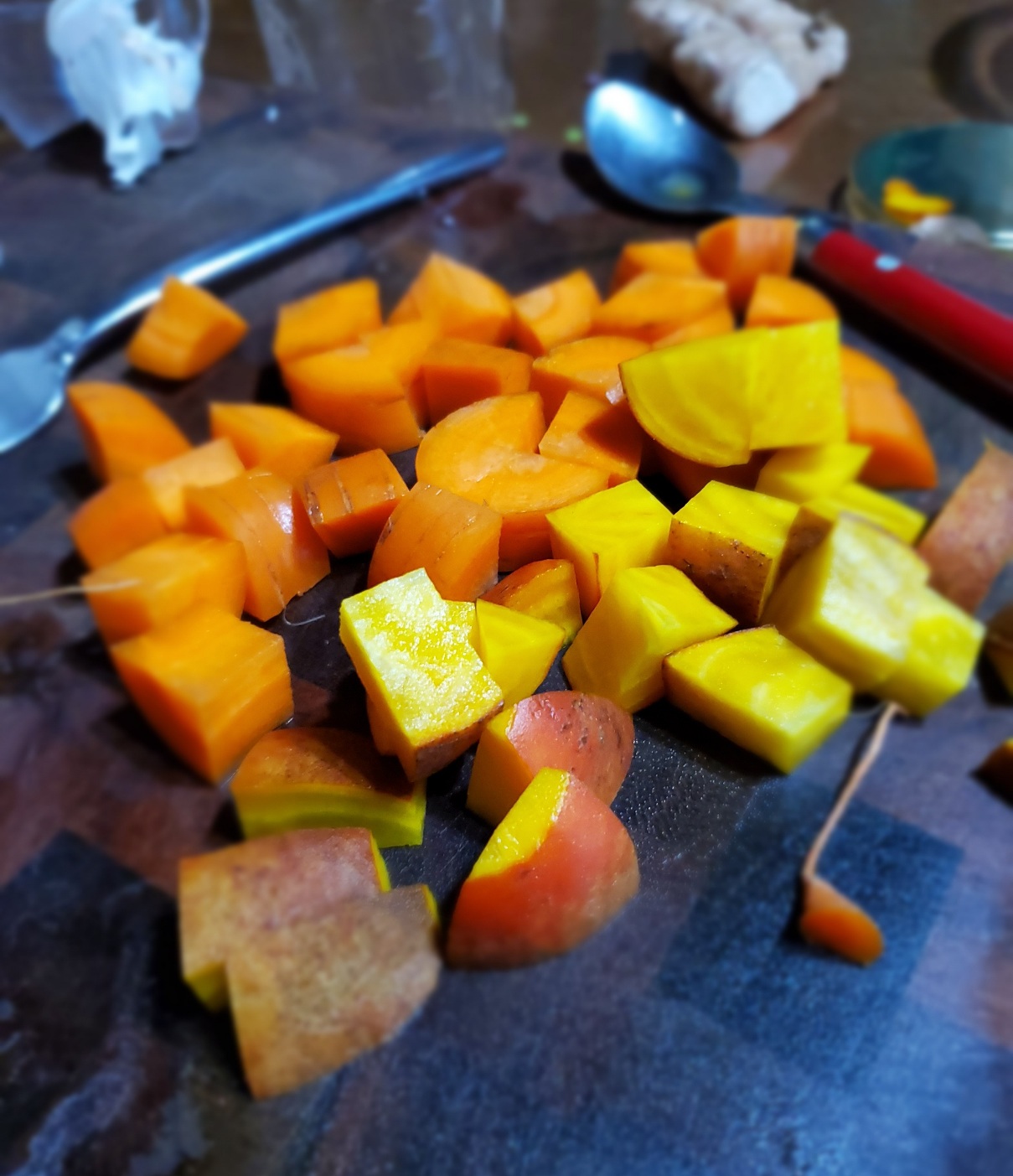Kitchari means “mixture.” It is the classic cleansing dish in Ayurveda. Gently detoxifying, highly digestible, easy on the systems, and adaptable depending on your needs. The essential components are: yellow split mung beans (mung dal), white basmati rice, ghee, and a selection of delicious, digestive spices.
 The mixture of rice and dal makes a complete protein; the spices aid in digestion and support gentle detoxification. It’s standard fare for an Ayurvedic cleanse. Eating a monodiet of kitchari for several days helps nourish the body while resetting the system.
The mixture of rice and dal makes a complete protein; the spices aid in digestion and support gentle detoxification. It’s standard fare for an Ayurvedic cleanse. Eating a monodiet of kitchari for several days helps nourish the body while resetting the system.
Having done many Ayurvedic home cleanses, making myself a fresh little batch each morning for sometimes weeks on end, I have this recipe down. I could probably do it with my eyes closed (not recommended). And I rarely get tired of it. It’s so deeply satisfying. You don’t have to be on a cleanse to enjoy this dish, either. We make it about once a week, especially when the cooler weather comes.
There are so many variations on the recipe. You’ll find quite a range out there: some super simple, some with a few more steps. This version is my personal go-to.
It’s so so so yummy.
1/2 c. mung daal
1 c. white basmati rice
2-3 T ghee
1/2 – 1 tsp cumin seeds
1/2 – 1 tsp mustard seeds (black)
1/2 to 1 tsp fennel seeds (optional)
1 tsp turmeric powder
1 pinch hing aka asafoetida
1/2 – 1 tsp salt
~1″ ginger, minced
1/2 to 1 tsp cumin powder
1/2 to 1 tsp coriander powder
5-6 c. water
Seasonal vegetables, chopped into bite-sized pieces, 1-2 c.
Depending on the season, I especially like:
golden beets, delicata squash, sweet potatoes, parsnips, green beans, kale, zucchini, carrots, fennel, snap peas… use what you like.
 Rinse and soak 1/2 mung dal dal overnight, or for ~ 4 hours
Rinse and soak 1/2 mung dal dal overnight, or for ~ 4 hours
Strain the dal.
Rinse and soak the basmati rice for 30-60 minutes prior to cooking. I usually start soaking the rice just as I begin to make the kitchari as this gives it about 30 minutes to soak.
Heat ~ 2 Tbsp. ghee in a heavy bottomed pot on medium heat.
Add mustard & cumin seeds, and fennel seeds, if using
Heat gently until you start to hear them “pop.” This means the prana is waking up!
Beware not to burn the ghee while waiting for the seeds to pop ~ don’t use high heat here.
Add the strained dal, the hing, turmeric and salt. Stir to incorporate and coat the lentils with the ghee and spices.
Keep on medium heat, stir a few times, when it begins to stick to the bottom of pot, add water
Add cumin & coriander powder along with minced ginger. Feel free to adjust quantities to taste preference.
Bring to a boil, then turn down and simmer on low, covered, for 20-25 minutes.
Strain the rice and add to the pot along with slower cooking vegetables (i.e.: beets, cubed butternut, parsnips, carrots)
Bring to boil again then simmer, partially covered, for 20-30 more minutes.
Add faster-cooking vegetable (peas, green beans) in about halfway through, ~ 15 minutes after adding the rice.
Cooking time for certain vegetables will depend, of course, on how they’re cut
Add kale/ collards, etc. 5 minutes or so before the end.
Don’t stir while cooking. Just check the water level around 10 minutes before done.
If all the water’s absorbed/ if the water is just below the level of the rice & dal, add in another cup (or more, if needed) and cover for the last 10 minutes.
I used to go for a thicker consistency, but these days I go for more water. The soupier consistency gives a nice and creamy effect and is easy on the digestion.
Having everything well-cooked is the goal. This version cooks the dal for longer than some recipes.
I prefer to cook mine for longer.
Traditional garnish options:
tsp. or so of ghee
fresh chopped cilantro
fresh lime juice
shredded coconut
Ghee and lime juice and perhaps a dash of salt are my go-to toppings.


